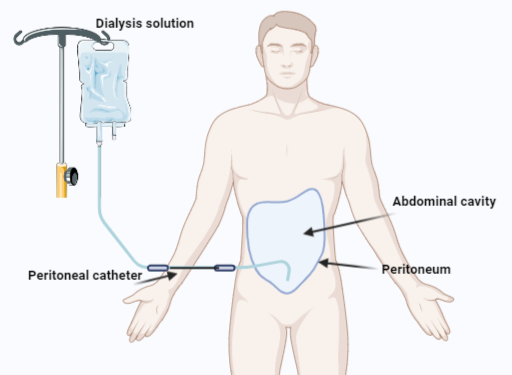Peritoneal dialysis

Peritoneal dialysis is a method of renal replacement therapy in which your peritoneal membrane is used as a filter. Water and its dissolved substances are passed from the blood to the dialysis solution through the peritoneal membrane, which is a very thin mucous membrane that covers the abdominal organs from the inside.
A flexible silicone tube is inserted into the abdominal cavity for the duration of the peritoneal dialysis treatment and approximately 2 liters of dialysis solution is injected into the abdominal cavity 4-5 times a day.
Waste, metabolic products and excess water pass through the peritoneal membrane into the abdominal cavity and are removed along with the used dialysis solution. This movement occurs during the exposure period of the solution in the abdominal cavity.

Peritoneal dialysis can be performed in two ways:
- By hand: continuous ambulatory peritoneal dialysis (CAPD)
- By machine: automated peritoneal dialysis (APD)
Usually, both options are home-based. The choice depends on the patient’s condition, lifestyle, and personal preferences. You can start with one type of peritoneal dialysis and then switch to another. You can discuss both types of peritoneal dialysis with your doctor at our dialysis center. Specialists will tell you what kind of peritoneal dialysis will be best for you.



